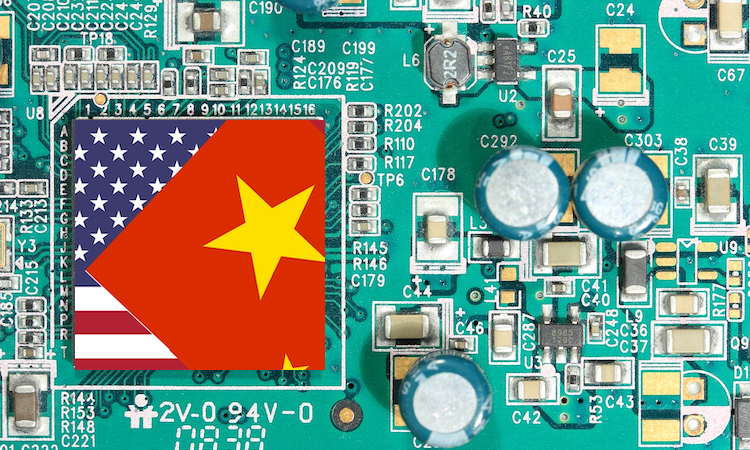
By Fukunari Kimura
Media on global trade frequently puts forward the narrative that the US–China confrontation will divide the world in two. But East Asian developing economies have a different view of supply chain decoupling since US–China merchandise exports and imports hit a record high in 2022 and East Asian production networks continue to move actively.
Quantifying the effect of supply chain decoupling is difficult. Trade controls, particularly export controls over high-tech products, became a major policy tool for decoupling in the United States and for some US allies, including Japan.
Items subject to export controls are specified in terms of traded goods, used technologies, export destination, importers and end-use. But the coverage is set very wide and only a small portion of exports are actually under strict control. Governments do not disclose information on products that are banned or under investigation. They also do not disclose how long the investigation took, even ex-post. Private firms may refrain from exporting without seeking an official decision. The international trade commodity classification may not match sensitive export items such as high-end semiconductors.
According to my on-going study with Mitsuyo Ando and Kazunobu Hayakawa, monthly international trade data at the industry level does not show any clear evidence of supply chain decoupling or a drastic reorganisation of production networks until the end of 2022. Yet the August 2020 US export controls that targeted Huawei substantially slowed down the company’s production in China and subsequently reduced Japanese exports to China, especially for parts and components used in Huawei’s wireless communication equipment assemblies. Regression analyses find a statistically significant reduction in Japanese exports to China since August 2020, particularly in semiconductor-intensive parts. The on-going study estimates a 3.3 per cent reduction in exports during this period compared to 2019 trade data. Supply chain decoupling is real, but the trade-reducing effect seems to be limited in scale so far.
Supply chain decoupling in the US–China confrontation came into a new phase when the Biden administration endorsed the Chips and Science Act in August 2022 and strengthened US export controls in October 2022. Though the implementation details of these policies have not been disclosed yet, they will likely further disrupt supply chains in terms of parts, materials, production machines and technologies used for supercomputers.
But supply chain decoupling will likely only be partial. International production networks have overall remained active, particularly in East Asia. Globalisation has provided many private firms with global economic opportunities. With the current heated geopolitical debate between the United States and its allies, the expansion of trade controls is inevitable. But the ‘rest’ of the economy outside of effective trade controls should not be neglected in this debate. The world must keep economic dynamism.
For middle powers such as Japan, the government can take several measures to ensure the health of the rest of the economy. The border between the economy, which is placed under strict trade controls, and the rest of the economy, which is not, must be delineated as clearly as possible.
It is important for civilians that military-use technologies do not get lumped in with regular technologies to avoid an adverse effect on the rest of the economy. If the border is not made clear, the private sector will face huge uncertainties that may shrink trade and investment. It is not only middle powers that must mark clear borders between the economy under trade controls and the rest of the economy, but also the United States. Middle-power governments should communicate closely with the United States and provide relevant information to the private sector. The cost of a blurred border will punish small and medium enterprises as well as firms in developing countries.
Middle powers such as Japan must practice economic diplomacy for the Global South — especially ASEAN — by deepening economic and social relationships, rather than being forced to choose a side. The South is interested in promoting a new agenda on digital and green trade and investment. The negotiation over the Indo-Pacific Economic Framework, for example, must enhance multilateral economic relationships, rather than just pushing an economic security agenda.
The rest of the economy must keep to the rules-based trading regime. While the G7 is failing to make national security policies consistent with existing trade norms, the voice from the Global South, particularly ASEAN, is crucial. ASEAN’s engagement in international production networks has been profound and it must continue to support the rules-based trading regime. Together with the Global South, the rules-based trading regime must be retained as widely as possible.
About the author: Fukunari Kimura is Professor at the Faculty of Economics, Keio University, and Chief Economist of the Economic Research Institute for ASEAN and East Asia (ERIA).
Source: This article was published by East Asia Forum






